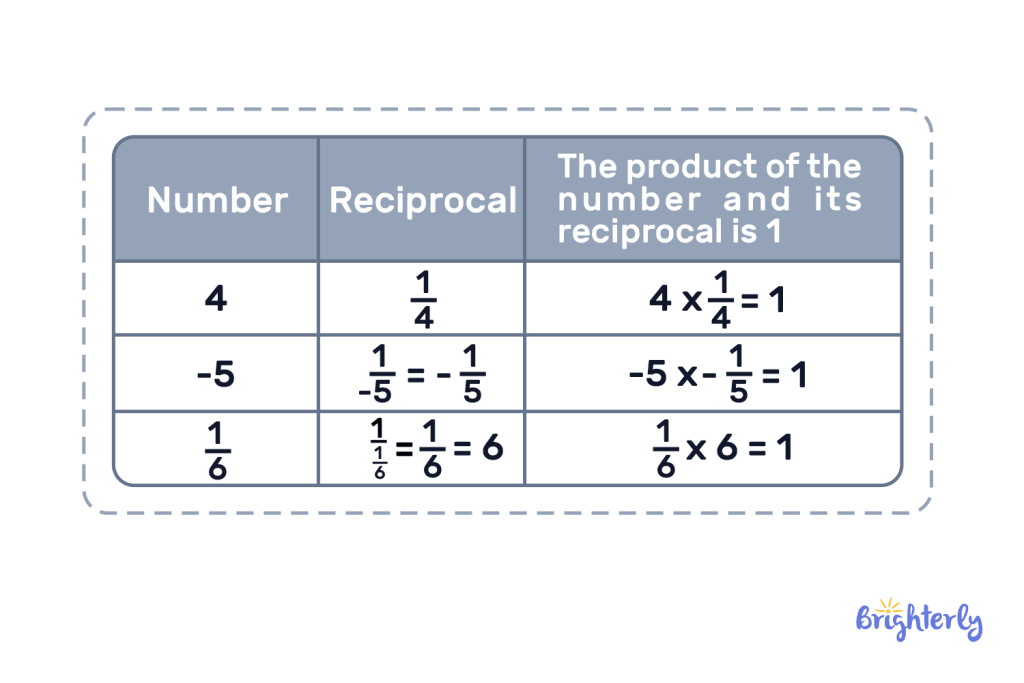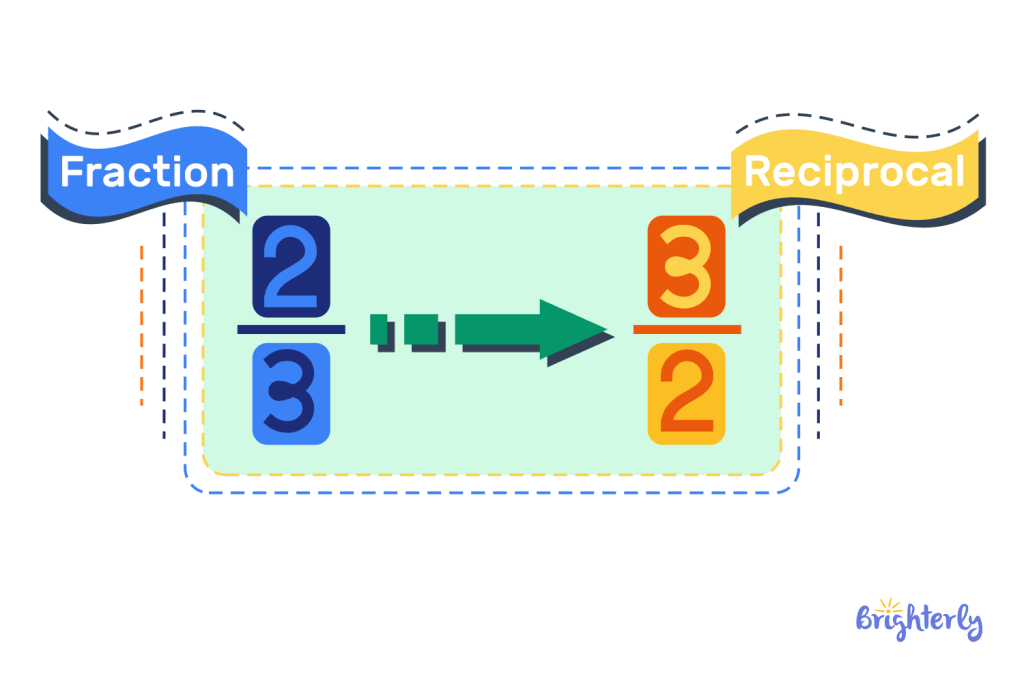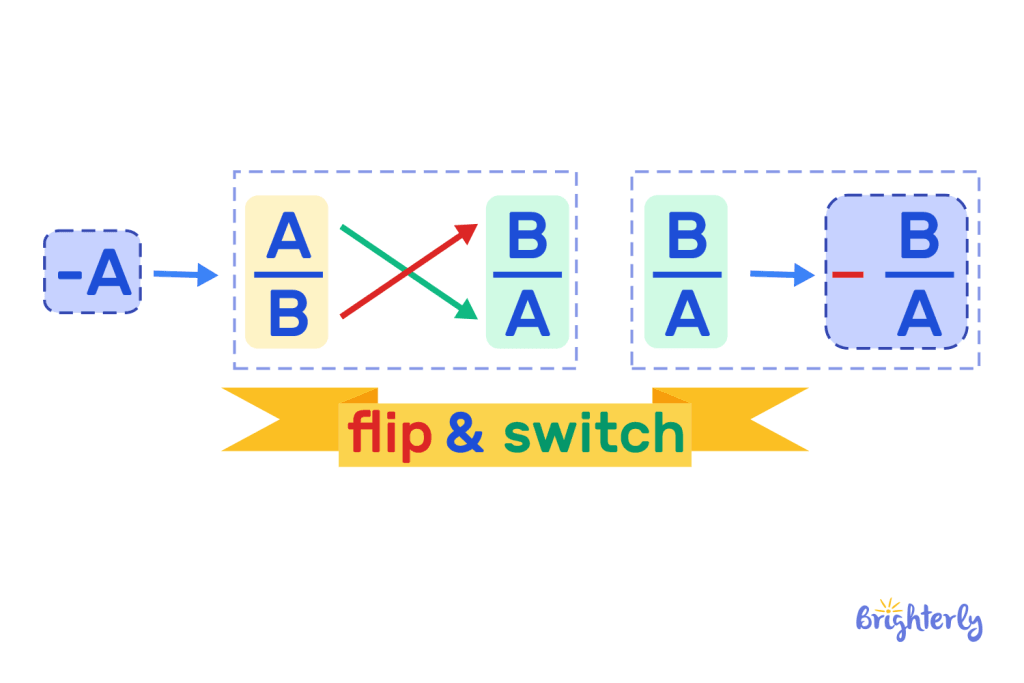Reciprocal: Definition, Math Problems, Solved Math Tasks
reviewed by Jo-ann Caballes
Updated on October 15, 2024
Here at Brighterly, we break down seemingly complex math concepts to make them enjoyable to learn and easy to understand.
Today, we’re going to cover a core math concept: reciprocals.
Reciprocals are related to both decimals and fractions, so understanding them will help you master more complex math concepts.
Here, we’ll cover the reciprocal meaning in math, how to find reciprocals and reciprocal examples. We’ll also share solved math tasks and free worksheets to help you cement your knowledge.
What is a reciprocal in math?
A reciprocal of a number in math is the result you get when you divide 1 by that number. It is also referred to as a multiplicative inverse. Reciprocals are the key to unlocking more complex math operations, including fractions, finding perpendicular lines and dealing with inverse proportions. Below, we’ll define reciprocal in math.
Definition of reciprocal in math
The definition of a reciprocal in math is the inverse of a number. In other words, the reciprocal 1 divided by n (our starting number). Another way to define a reciprocal in math is a number to the power of -1. The reciprocal symbol is 1/x or x-1.
The sum of a number and its reciprocal will always be 1.
For example, if we start with the number 3, its reciprocal is 1 ÷ 3 (0.3˙) or ⅓. If you multiply 3 by its reciprocals – whichever way you do it – you get 1.

How do you find the reciprocal of a number?
To find the reciprocal value of a number, you’ll divide the number 1 by that number, or represent it in fraction terms as 1 over that number, where 1 is your numerator and n is your denominator.
Let’s use some reciprocal examples, like the reciprocal of 9. 1 ÷ 9 = 0.1˙. It can also be expressed as 1/9 because it can function as a fraction, or 9-1, as the number is to the power of -1.
What is a reciprocal of 5?
The reciprocal of 5 is ⅕, or 0.2, because 1 ÷ 5 = 0.2
What is the reciprocal of 4/7?
The reciprocal of the fraction 4/7 is 7/4. That’s because, to find the reciprocal of a fraction, you swap the numerator and denominator.
Reciprocals of a fraction
The reciprocal of a fraction can be found by turning the fraction upside down – aka swapping the numerator (the top number) and the denominator (the bottom number).

What does reciprocal mean in fractions?
In fractions, the reciprocal means the inverse of your fraction. Therefore, to find the inverse, you simply turn your fraction upside down.
Reciprocals of negative numbers
Did you know negative numbers can have reciprocal values too?
To find the reciprocal of a negative number, first convert it into an improper fraction.
Next, swap around the numerator and denominator.
Finally, add the negative sign to your number.
For example, with -9, first convert it to 9/1.
Then, flip your fraction around: 1/9.
Finally, add the negative sign – so the reciprocal of -9 is -1/9.

What is the reciprocal of 0?
The number 0 does not have a reciprocal. This is because a reciprocal is the inverse of a number, and 0 has no specific inverse. 0 also cannot be the reciprocal of any other number.
Solved math tasks: examples
Ready to put your knowledge on reciprocals to the test? Complete our math tasks below – once you’ve completed them all, check the answers to see how well you’ve done!
Solved math task 1
Find the reciprocal value of the number 13.
Answer:
The reciprocal of the number 13 can be expressed in three ways:
|
Solved math task 2
Find the reciprocal of the fraction 9/15.
Answer:
| 15/9 |
To find the reciprocal of any fraction, all we need to do is swap the numerator or denominator around. In other words, flip your fraction upside down.
Solved math task 3
Can the reciprocal of 20 be presented as 0.05?
Answer:
| Yes. |
That’s because the reciprocals of a number can be represented as a decimal, fraction, or the number to the power of 1.
Reciprocal: practice math problems
Reciprocal: worksheets
Now that you understand reciprocals and have seen some reciprocal examples math, keep your knowledge fresh with our free math worksheets that cover reciprocals and their related concepts:







